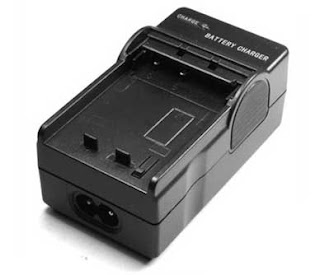| ||||
| | ||
| |
USB Phone World Posting Page
Tuesday, December 20, 2011
This blog article is aimed at favoring readers with a brief introduction of how to correctly charge a laptop battery, including its charging time, capacity, and properties. As most laptop users know, the first time you use a newly bought Li-ion battery, you need to fully charge it and release its electricity for three times---in other words, the fact that the battery must be charged fully for at least one time and then you must remember to release all electricity from the battery. Only by continuously doing so for three times can you begin employing this battery.  The reason for doing so issues from a necessity to activate such internal chemical substance of the battery as to empower its internal electrochemical reaction to enter into the best state, which will allow your subsequent employment of it to depend upon its charging at random. But you must ensure that the battery has to have its electricity fully released for one time within a month, because this deep release of electricity can serve to activate its properties, which is essential to the prolongation of its service life. In case the battery hasn’t been used for more than three months, it will have to be fully charged and its electricity will have to be fully released for three times, before your usage of the battery, just the same as the case of a new battery, so as to guarantee its activation. Provided that a Ni-MH battery is used, its charging time must be well controlled. It also has, within its charging time, to be fully charged, and prior to its normal application, its complete charging and electricity release for three times are mandatory. Most users, every time they start using the laptop computer, seem to have been used to letting their laptops be plugged into alternating current power to supply them with electricity. Rarely do they employ a battery in the supplying of laptops with electricity. In fact, they should use the battery to supply the laptop with electricity for at least one or two times every month, and fully use the battery up, and then fully charge it at a time by connecting the charger to alternating current. It means a great deal of benefit to a charging battery to fully charge it after it runs out of electricity, for there is a certain sluggishness effect in a Li-ion battery used by a laptop computer. If not used for a long time, the battery will cause its Li-ion to lose its activeness, so that it must be reactivated. The battery had best be taken out when the laptop computer is using alternating current indoors, lest the battery should often get involved in a charging state. It will be best to turn off the laptop computer when its battery is being charged, so that the battery can be fully charged. Please don’t pull out the electric source in the course of battery charging. The battery will be able to be used in 30 minutes after its charging. Furthermore, most laptop computers, on account of it is easy for the electricity within the battery to run out, has only one battery, so some of the laptop manufacturers have been asked to develop a rapid charging function for batteries which, after the electricity runs out completely, permits users to supply their laptops with electric energy at the quickest speed. For example, dell laptops run to the express charge function, and can be charged to above 90% within an hour. Why, then, not 100%? Because according to the properties of the charging and release of electricity of Li-ion batteries, the lifespan of the battery, if often rapidly charged to 100%, will be greatly shortened, and that’s why the last 10% will serve to extend the lifespan of the battery by means of its rapid charging being changed into slow charging. For general laptop computers that lack for such function, the best way is to charge the battery while the laptop is closed, since it will shorten more than 30% charging time to charge the battery with the laptop closed rather than with the laptop open. A correct way, above all, to charge the battery plays a most significant part in the extension of its lifespan as well as in the decision of whether its long lifespan will be charged with excellent performance such as you have expected. Labels: capacity, Charging Time, Properties by: USB Phone World |
Previous Posts
Archives
Subscribe to |
HomeCopyright 2008. usbphoneworld.com All Rights Reserved. |



